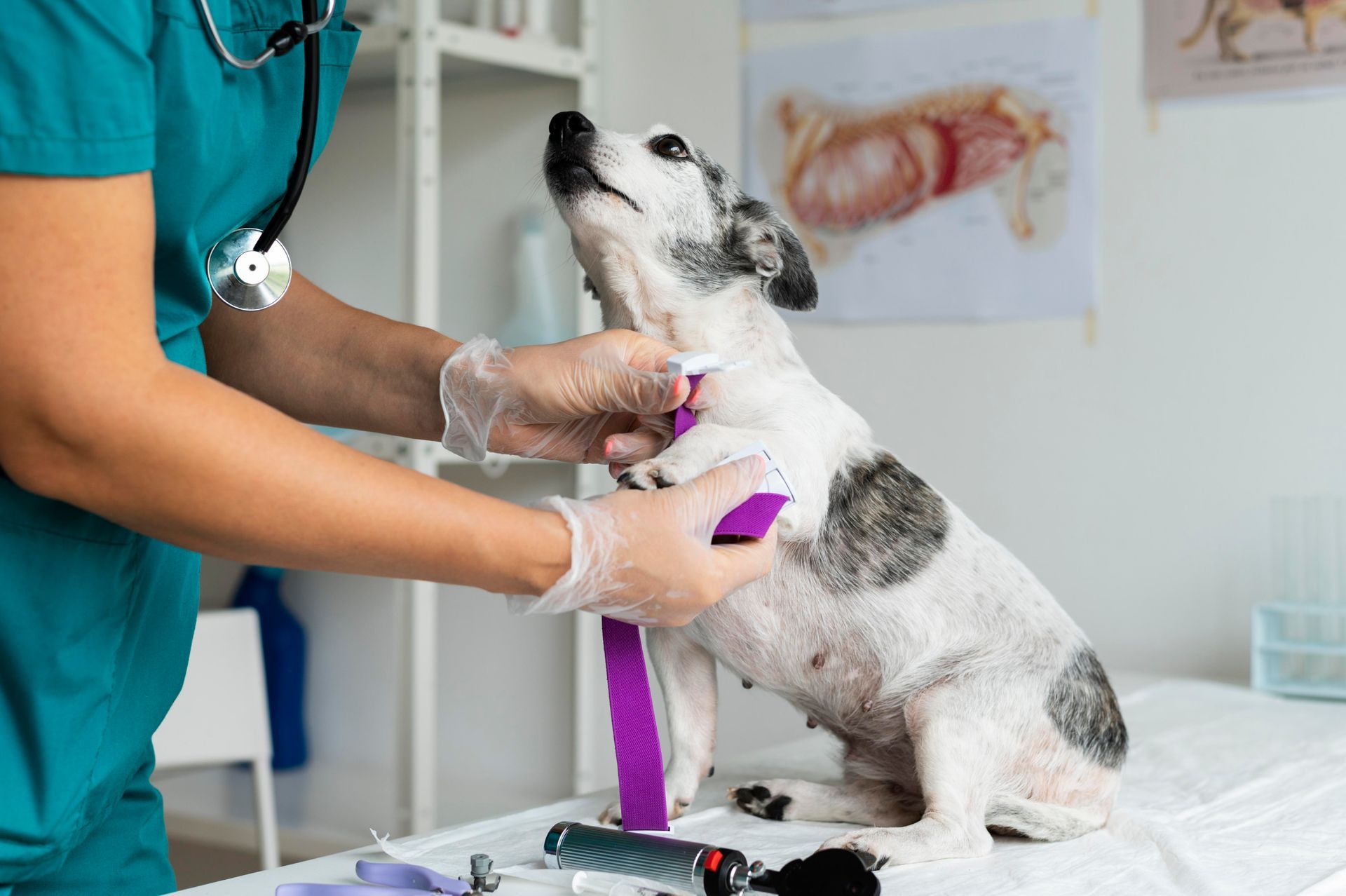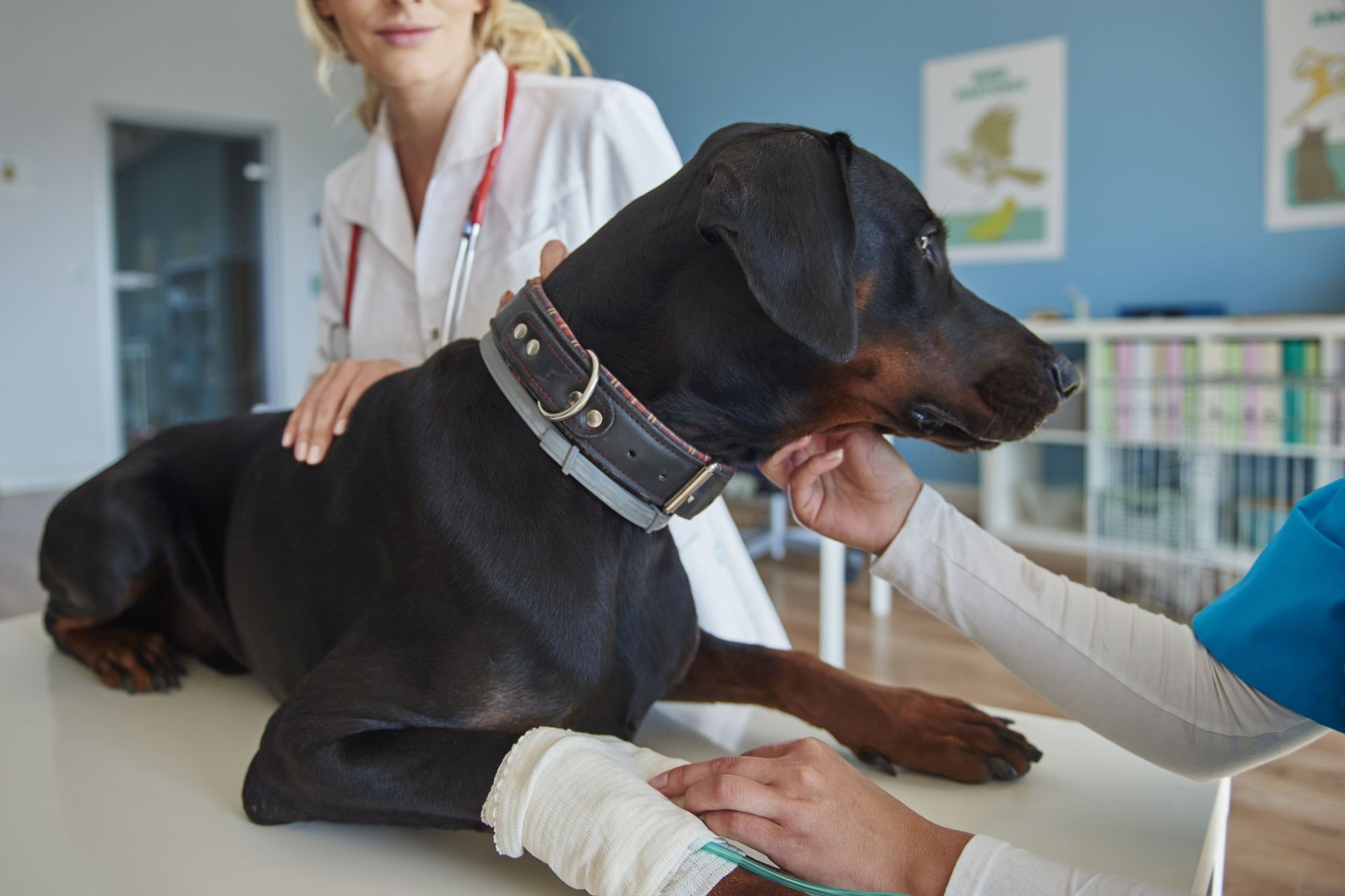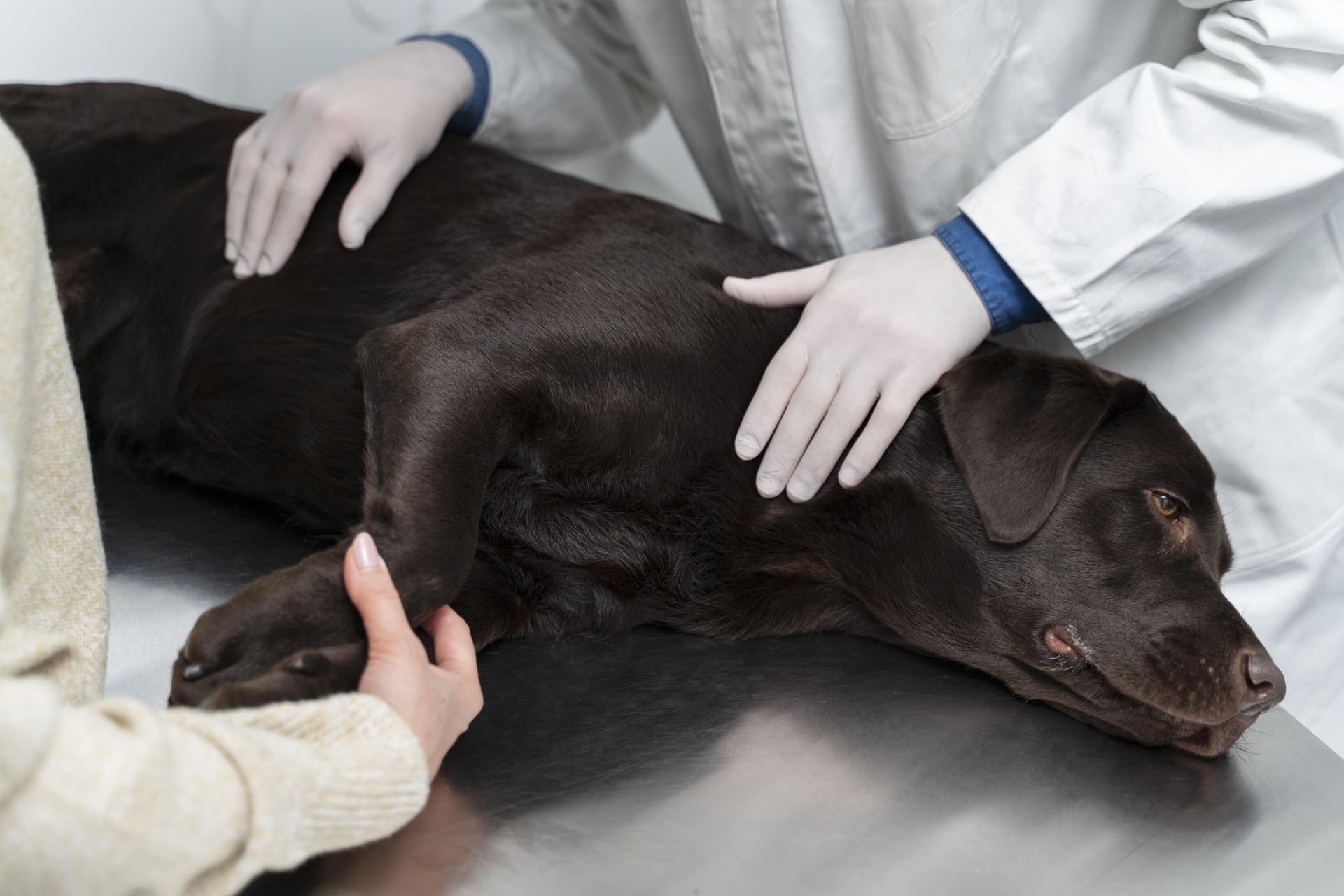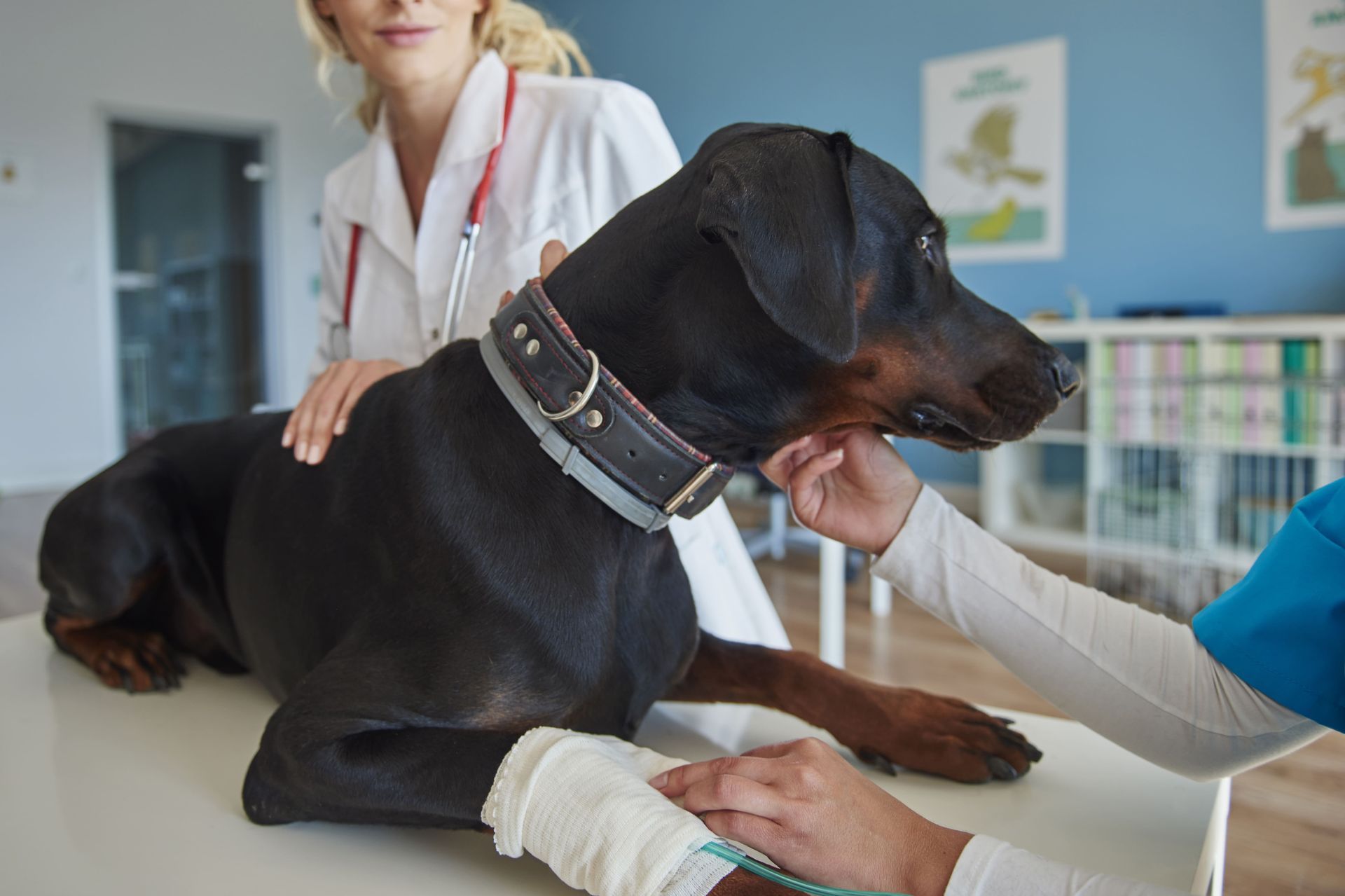7 Common Questions About Pet X-Rays Answered
Pet owners often find themselves grappling with the idea of pet X-rays. Not only are there costs involved, but there’s also the uncertainty about how X-rays could benefit their furry friends. To ease your mind and equip you with the knowledge you need, we’ve answered some of the most common questions about pet X-rays here.
1. Why Are X-Rays Important for Pets?
Pet X-rays are an essential diagnostic tool in veterinary medicine. They provide veterinarians with a non-invasive way to look inside your pet's body, allowing them to diagnose conditions quickly and effectively. This means less guesswork and faster treatment plans, which is crucial to your pet's well-being. From identifying fractures to detecting swallowed objects, X-rays unveil the unseen, playing a pivotal role in your pet’s health management. Notably, they help detect internal issues that might go unnoticed during a regular physical exam, ensuring timely interventions and potentially saving your pet's life by catching serious conditions before they escalate.
Pet X-rays offer insights that are crucial during emergencies and routine check-ups alike. According to Thousand Oaks vets, they assist in diagnosing a variety of issues, from broken bones to bladder stones, by providing vital images of your pet's internal state. This detailed peek into your pet's body helps tailor specific medical interventions, avoiding unnecessary additional procedures or treatments. Their importance cannot be overstated, as they play a critical role in shaping comprehensive care plans for various medical situations.
The significance of pet X-rays extends beyond immediate diagnosis. They are instrumental in monitoring ongoing health issues. For instance, if your pet is undergoing treatment for cancer or heart disease, pet X-rays help track the progress and adjust treatment strategies if necessary. This dynamic use of imaging ensures that your pet receives the best care possible, adapting to changes and evolving health landscapes promptly. It’s a technology that stands at the forefront of veterinary diagnostics, reiterating the fact that preventive care is just as vital as immediate health responses.
2. What Does the X-Ray Process Involve?
The process of getting an X-ray for your pet is straightforward. Your pet will be positioned on a table, and the X-ray machine will be used to capture images. Depending on the area being examined, pets might need sedation to keep them still, ensuring the clearest images possible. The machine emits a small dose of radiation, which passes through the body, producing an image of the internal structures. The positioning is vital, as it directly affects the clarity and diagnostic value of the pet X-rays.
While many pets tend to cooperate, some might feel anxious around unfamiliar equipment or environments. Sedation might be necessary for more anxious animals or when precise positioning is required, such as taking X-rays of the spine or skull. The use of sedation ensures that the pet is comfortable and stationary, safeguarding them from stress and enhancing the quality of the results. Thousand Oaks veterinarians suggest that sedation is often considered in cases where muscles need relaxation for a clearer image or when the X-ray concerns intricate areas requiring minute detail.
The entire pet X-ray process is closely monitored by professionals to ensure your pet’s safety. Veterinary clinics are equipped with modern technology that minimizes radiation exposure and optimizes image accuracy. This meticulous attention ensures that your pet's experience is as seamless as possible, contributing significantly to accurate diagnosis and efficient treatment planning. After the images are taken, they are promptly analyzed by the vet, often providing immediate insights into your pet’s health condition, expediting the care process, and setting the stage for effective medical interventions.
3. Do X-Rays Cause Any Pain or Discomfort?
X-rays themselves are painless. The procedure is quick and similar to getting a photograph taken. However, the positioning required for certain images might be slightly uncomfortable, which is why sedation is commonly used to minimize any stress or discomfort for the pet. Keeping pets calm ensures the process is smooth and efficient, eliminating muscle tensions or stresses that could otherwise hamper image clarity. As sedation is tailored based on your pet’s needs, it guarantees the procedure is as stress-free as possible.
4. Are X-Rays Safe for Pets?
Pet X-rays are considered safe. The amount of radiation used in a typical X-ray procedure is minimal and poses little risk when conducted properly. Veterinary professionals are trained to ensure that any exposure is as low as possible, balancing safety with diagnostic requirements. Much like Thousand Oaks vets state, while pet X-rays involve radiation, precautions are taken to minimize any potential impacts, ensuring your pet’s safety is maintained throughout the process.
Most veterinary clinics employ advanced digital X-ray equipment that further reduces radiation. By adopting these safer technologies, the diagnostic processes become more refined, ensuring precise outcomes with the utmost concern for pet welfare. Additionally, the protocols are continually updated on par with new health guidelines, providing peace of mind to pet owners and guaranteeing that your pet receives the best care possible with the least risk involved.
Understanding that every pet has unique health needs is essential. Therefore, a discussion with your vet about your pet's specific condition and past medical records helps shed light on the necessity and safety of pet X-rays. This transparency ensures you’re engaged in the health care process, allowing you to make informed decisions supported by trusted veterinary advice, ultimately safeguarding your pet’s health journey and making the diagnostic experience positive and problem-solving.
5. How Do Vets Use X-Ray Results?
Vets analyze pet X-ray images to identify fractures, tumors, foreign objects, and other internal issues. These insights enable vets to pinpoint the root causes of symptoms, plan surgeries if needed, and monitor the progress of medical conditions over time. The ability to visually assess the internal state of your pet without invasive procedures makes X-rays an invaluable tool. This prevents potential delays in diagnosis, fostering a proactive health approach that can make a significant difference in treatment effectiveness.
Beyond diagnosing acute conditions, pet X-rays can illuminate chronic issues that require long-term management. For instance, they can reveal arthritis progress, guide physiotherapy, or determine the impact of ongoing treatments. This precision enables vets to offer tailored advice, equipping pet owners with comprehensive care strategies that address current conditions while preventing future complications. Such thorough assessments are crucial in ensuring your pet receives the best care possible, turning each diagnosis into an opportunity for health improvement.
6. What Should I Do Before My Pet's X-Ray?
Before an X-ray, it's important to follow any preparation instructions from your veterinarian, such as fasting requirements. You'll also need to discuss your pet's medical history and any current medications, as these could affect the procedure or its outcomes. Such precautions ensure that interventions are tailored to your pet’s particular health circumstances, paving the way for a successful and accurate diagnostic process.
For most pets, especially those with no pressing medical conditions, there aren’t many preparatory steps. However, understanding your pet’s unique needs is paramount in guiding this process. Your vet will provide personalized advice on steps to ensure your pet is both comfortable and ready for the procedure, creating an environment that upholds their health resilience while enabling efficient diagnosis.
7. When Might an X-Ray Not Be Enough?
While pet X-rays are useful, they're not always definitive. In some cases, additional imaging like an ultrasound or MRI may be necessary for a complete picture, especially in more complex conditions. Your vet will advise you if further diagnostic tests are needed. For instance, pet X-rays do not offer detailed images of soft tissues, which is where technologies like ultrasounds become pivotal, helping verify and clarify initial findings.
Moreover, certain conditions like ligament tears or detailed organ assessments might require the specificity that only advanced imaging can provide. This ensures that every health concern is addressed comprehensively, with X-rays serving as a part of a broader diagnostic strategy. Such collaborative approaches with your veterinarian ensure that every decision made is well-informed and in the best interest of your pet’s ongoing care and well-being.
Final Words
In conclusion, pet X-rays are a powerful, non-invasive diagnostic tool that offers invaluable insights into your pet’s health. Whether it's for detecting an emergency condition, monitoring a chronic illness, or guiding a treatment plan, their role in veterinary care is indispensable. By understanding what the process involves, how safe it is, and when additional imaging may be needed, you become a more confident and informed pet parent.
Embracing pet X-rays as part of your pet’s health journey can lead to faster, more accurate care and peace of mind for you. Trust in your veterinarian’s expertise and technology’s potential to uncover what can’t be seen, because sometimes, what lies beneath holds the answers to your furry friend’s brighter, healthier future.
FAQs
Q-1. How much do pet X-rays typically cost?
Ans: The cost of pet X-rays can vary depending on the area being examined, the clinic, and whether sedation is required. Generally, it ranges from $75 to $300 or more.
Q-2. How long does it take to get pet X-ray results?
Ans: Many clinics provide results on the same day, often within an hour. In complex cases, a radiologist may be consulted, which could take 24–48 hours.
Q-3. Can I be present during my pet’s X-ray?
Ans: For safety reasons, most clinics do not allow owners in the X-ray room due to radiation exposure, but you’ll be reunited with your pet immediately afterward.
Q-4. How often should pets get X-rays?
Ans: Pet X-rays are not done on a set schedule. They are recommended based on symptoms, age-related issues, injuries, or as part of treatment monitoring.









